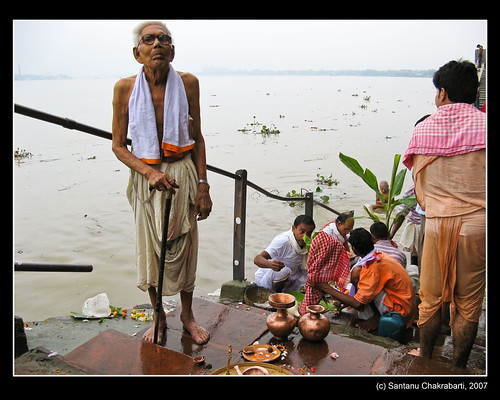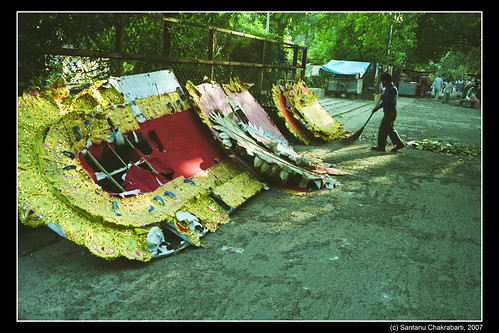The festival of Durga puja takes up its momentum by observing ceremonial b
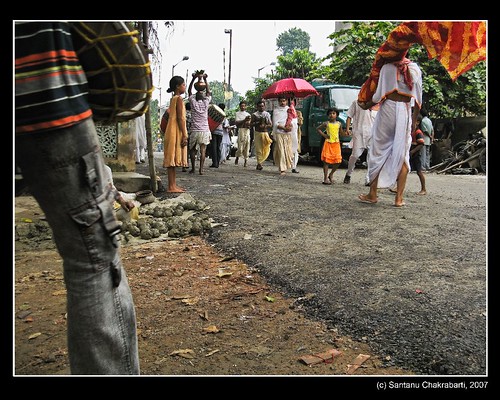
athing of Navapatrika, a form made up of nine plants wrapped up in a piece of cloth, on the second day - that is "Maha Saptami". "Nava" means nine and "Patrika" means plants in Sanskrit.
The nine plants are - Banana (Kadoli), Wood apple (Vilva), Pomegranate (Dadim), Turmeric (Haridra), Barley (Jayanti), Asoka, Paddy (Dhanya) and Kachu (Arum colocasia). The nine goddesses presiding over the individual plants are Brahmani, Kalika, Durga, Karttiki, Siva, Raktadantika, Sokarahita, Camunda, and Lakshmi respectively. These are the nine manifestations of the "Parama Prakriti" (The Absolute Nature), that is the goddess Durga. Hence in essence it is a form of worshiping the Mother Earth.
The nine goddesses presiding over the individual plants are Brahmani, Kalika, Durga, Karttiki, Siva, Raktadantika, Sokarahita, Camunda, and Lakshmi respectively. These are the nine manifestations of the "Parama Prakriti" (The Absolute Nature), that is the goddess Durga. Hence in essence it is a form of worshiping the Mother Earth.
In popular belief the deity is imagined as the spouse of Ganesha, hence the name "Kolabou" or "The Banana wife".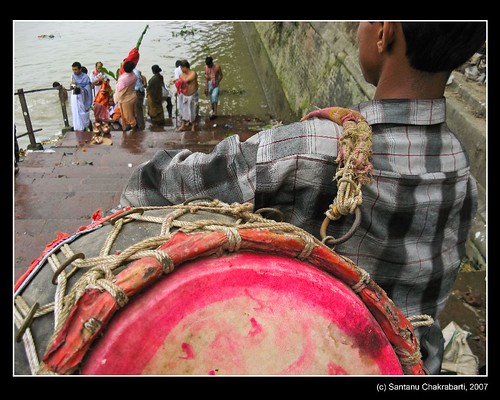 The main frame of the form is made up of a leafy banana trunk and thus it is called "Banana wife". I think there is a meaning to this association. The other name of the Lord Ganesha is "Siddhidwata", meaning the giver of success and prosperity. In an agricultural society what can be more prosperous than fields full of crops, trees heavy with fruits and lush green vegetation?
The main frame of the form is made up of a leafy banana trunk and thus it is called "Banana wife". I think there is a meaning to this association. The other name of the Lord Ganesha is "Siddhidwata", meaning the giver of success and prosperity. In an agricultural society what can be more prosperous than fields full of crops, trees heavy with fruits and lush green vegetation?


Early in the morning the deity is taken to the bank of a river for the cer emony, among beating of the drums. In Kolkata it takes place mainly at the ghat of the river Ganga. At the start of the ritual the plants are immersed in the water of the river for washing. Then it is wrapped up in a new piece of cloth and the puja starts with the chanting of the mantras. The deity is offered fruits and sweets for Her pleasure. After all the rituals of puja are over the deity is taken back to the pandal and is placed by the side of the Ganesha.
emony, among beating of the drums. In Kolkata it takes place mainly at the ghat of the river Ganga. At the start of the ritual the plants are immersed in the water of the river for washing. Then it is wrapped up in a new piece of cloth and the puja starts with the chanting of the mantras. The deity is offered fruits and sweets for Her pleasure. After all the rituals of puja are over the deity is taken back to the pandal and is placed by the side of the Ganesha.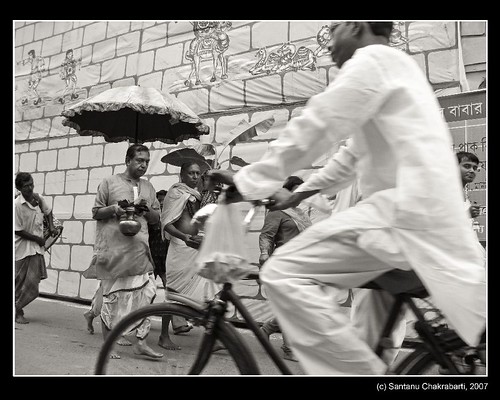
Resources:
http://www.belurmath.org/durga_puja/article_on_durga_puja.htm
http://www.happy-nomads.nl/phulpati-dashain-nepal.html
http://www.hscnet.org/hwp.php?articleid=7
Full story...
 ed rod-shaped ones. Hence in many a occassion, like the immersion of a deity or the celebration of victory by a favourite team, their use is abundant. You can wrap them round your forehead or hold two of them tightly against wind to make sound or just can swing them to show your enjoyment.
ed rod-shaped ones. Hence in many a occassion, like the immersion of a deity or the celebration of victory by a favourite team, their use is abundant. You can wrap them round your forehead or hold two of them tightly against wind to make sound or just can swing them to show your enjoyment.






